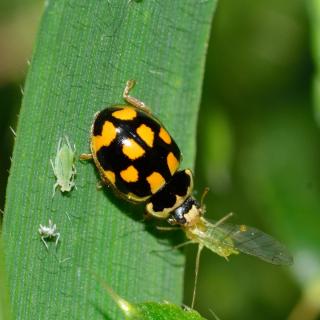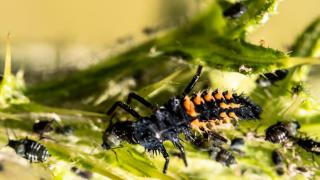

The Good Lord’s beetle is an incredible bug that feeds on aphids. It is the best of the gardener’s friends.
Read also:

The most common ladybug is the one with seven dots. It is very common in vegetable patches and around wild plants. The ladybug with two dots is often found around fruit trees and shrubs. The yellow ladybug with 14 dots appreciates vegetables, whereas the red one with 22 dots is a regular sight around wild flowers like dandelions. Most species feed on aphids, but others indulge in scale insects or mites and ticks.

To have ladybugs in your garden, no need to purchase them in your local horticulture store. Simply practice farming without any chemical products, and don’t eliminate all the wild plants that typically attract aphids away from your own cultures. The ladybugs will follow.
Laure Hamann
The Ladybug, also called “our Lady’s bug”, got the name centuries ago in popular culture. In Europe, during medieval times, the catholic Church broke the cycle of hunger and starvation through the work of many monks in monasteries. They mastered the art of rotating crops, draining inhospitable marshes, and growing food in larger fields. Fields grew larger as entire communities worked together in shared fields.
This had a drawback, though. Monoculture, or growing the same crop on wider surfaces, gave rise to invasions of pests that devoured everything, particularly aphids and the like. In their despair, people called to Mary for help… and ladybugs appeared to control the pests!
Of course, this phenomenon is perfectly natural, but the desire to see God’s hand in the solving of the crisis led to the common name of the providential insect… the Ladybug!
Ladybugs sold in garden stores are usually native to Asia. They tend to turn quite invasive and crowd out local species. Best grow plants that will attract local species from neighboring gardens: flowers like marigold, shrubs like hibiscus and trees such as birch.